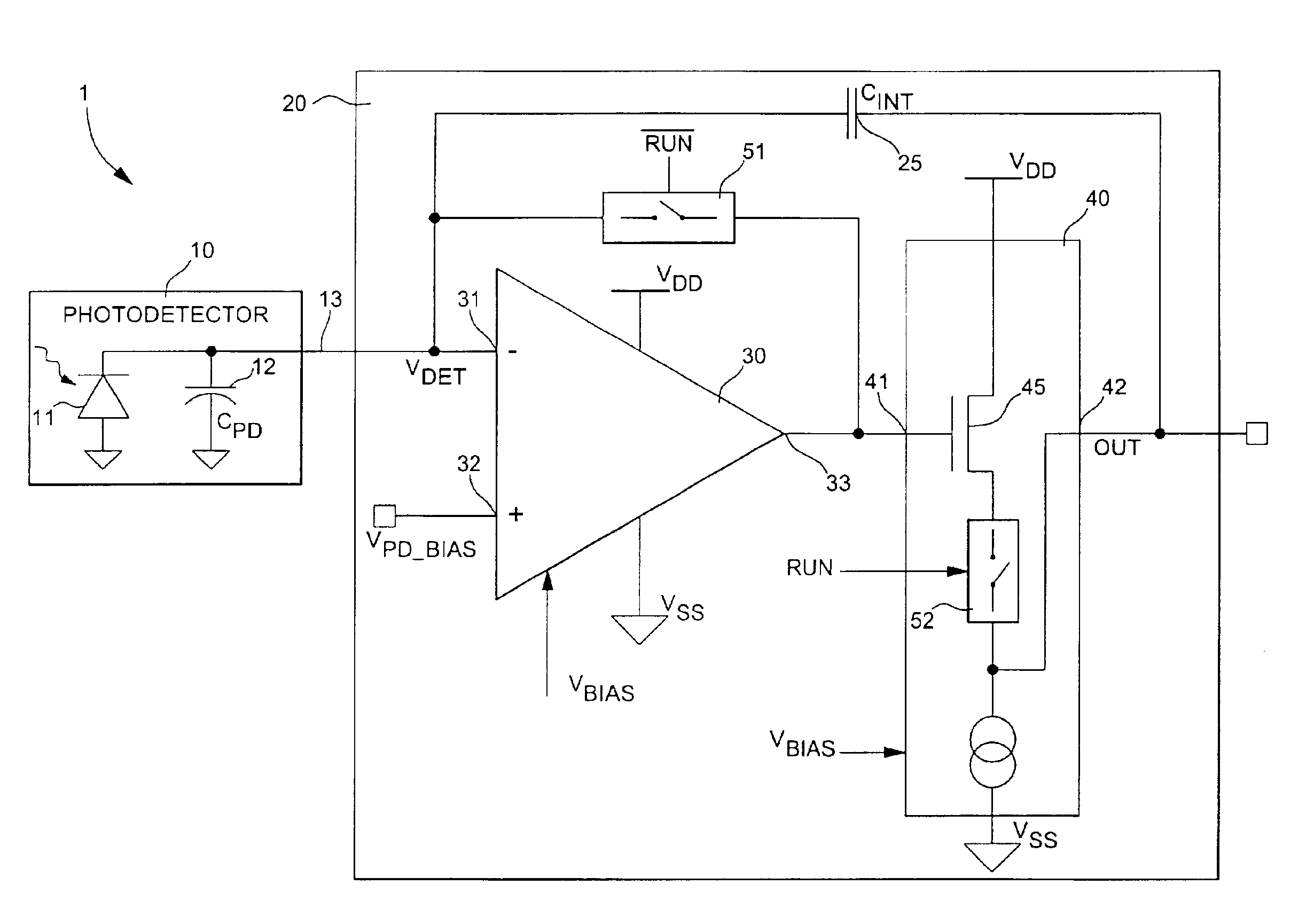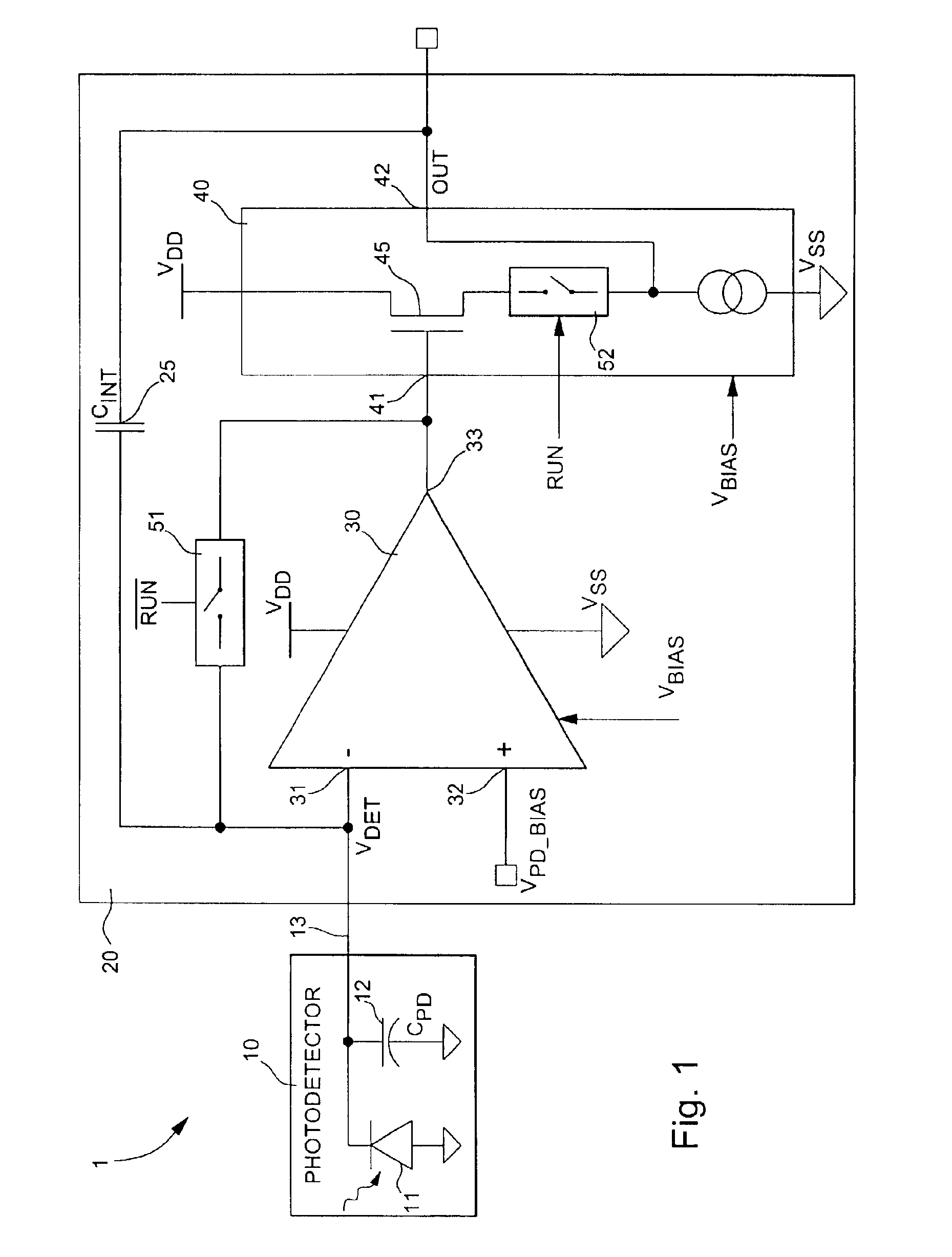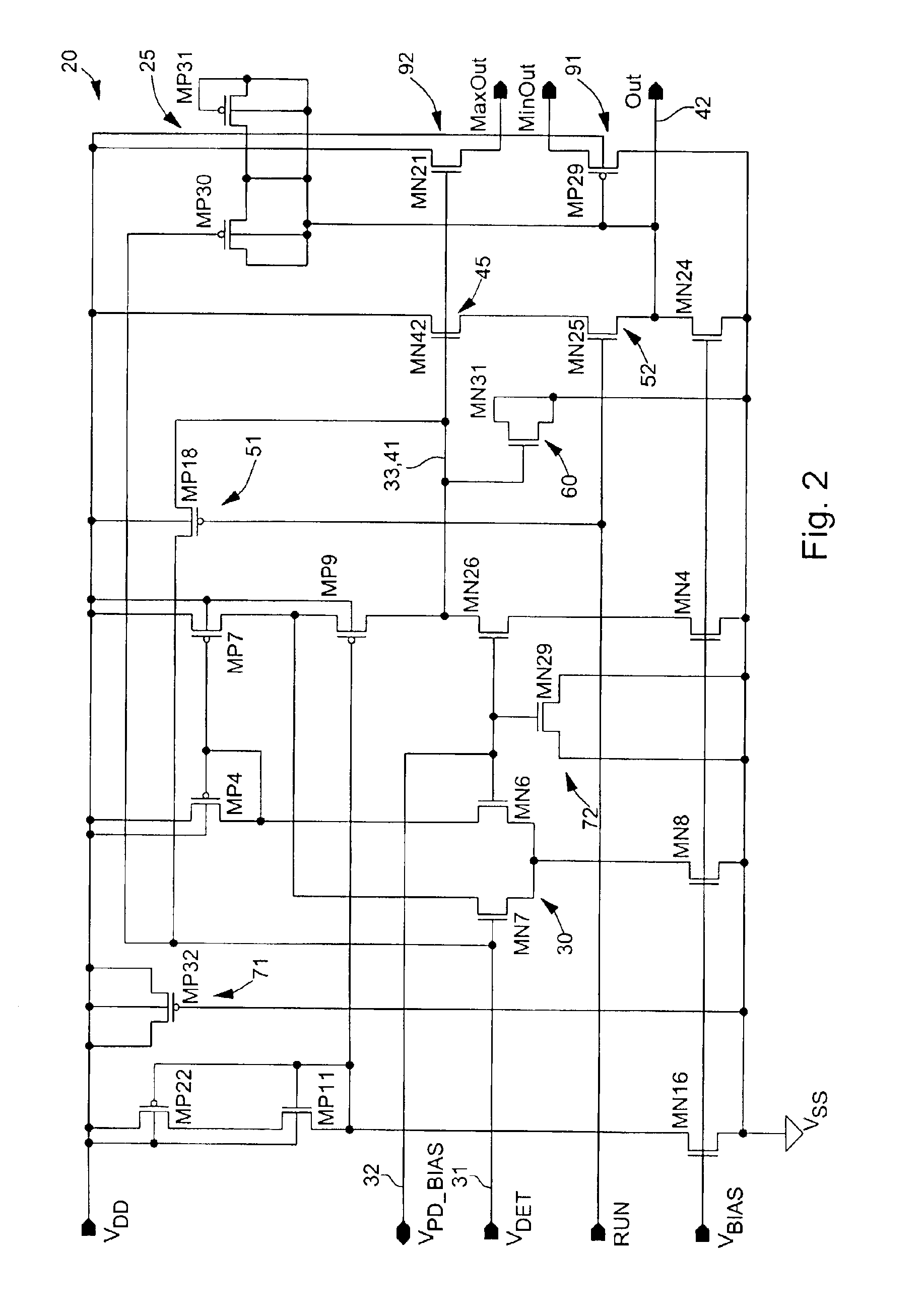Low power integrating circuit for use with a photodetector and optical sensor including such an integrating circuit
a low-power, integrated circuit technology, applied in the direction of amplifiers, electric pulse generators, light-controlled amplifiers, etc., can solve the problems of insufficient solution, inability to realize the integrating capacitor as a standard mos transistor, etc., to maximize the maximum circuit output voltage, minimize the area (signal connections and transistors), and optimize the design
- Summary
- Abstract
- Description
- Claims
- Application Information
AI Technical Summary
Benefits of technology
Problems solved by technology
Method used
Image
Examples
Embodiment Construction
FIG. 1 is a generalized schematic bloc diagram of an optical sensor, indicated globally by reference numeral 1, including a photodetector 10 and an integrating circuit 20. The illustrated photodetector 10 here consists of a reverse-biased photodiode 11 (such as an n-well photodiode formed in a p-type semiconductor substrate). For the purposes of this description, the term “photodetector” includes any detector sensitive to radiant energy. Examples include in particular photodiodes, photo-gates and phototransistors. Reference numeral 12 denotes the photodiode capacitance CPD. Photodetector 10 has an output 13 which is coupled to integrating circuit 20.
Integrating circuit 20 includes an operational amplifier 30 having an inverting input 31 coupled to photodetector 10, a non-inverting input 32 coupled to a non-zero bias voltage VPD-BIAS, which set the desired photodiode reverse bias voltage, and an output 33. By way of non limiting illustration, the photodetector bias voltage is nominal...
PUM
 Login to View More
Login to View More Abstract
Description
Claims
Application Information
 Login to View More
Login to View More - R&D
- Intellectual Property
- Life Sciences
- Materials
- Tech Scout
- Unparalleled Data Quality
- Higher Quality Content
- 60% Fewer Hallucinations
Browse by: Latest US Patents, China's latest patents, Technical Efficacy Thesaurus, Application Domain, Technology Topic, Popular Technical Reports.
© 2025 PatSnap. All rights reserved.Legal|Privacy policy|Modern Slavery Act Transparency Statement|Sitemap|About US| Contact US: help@patsnap.com



